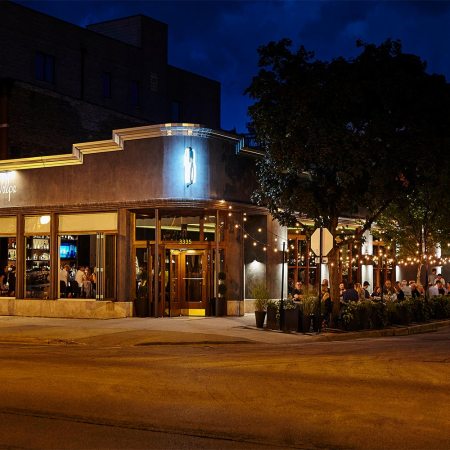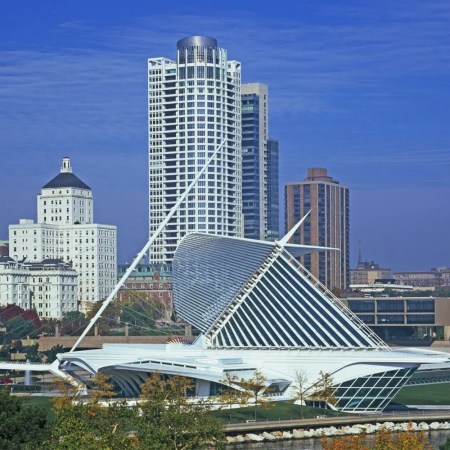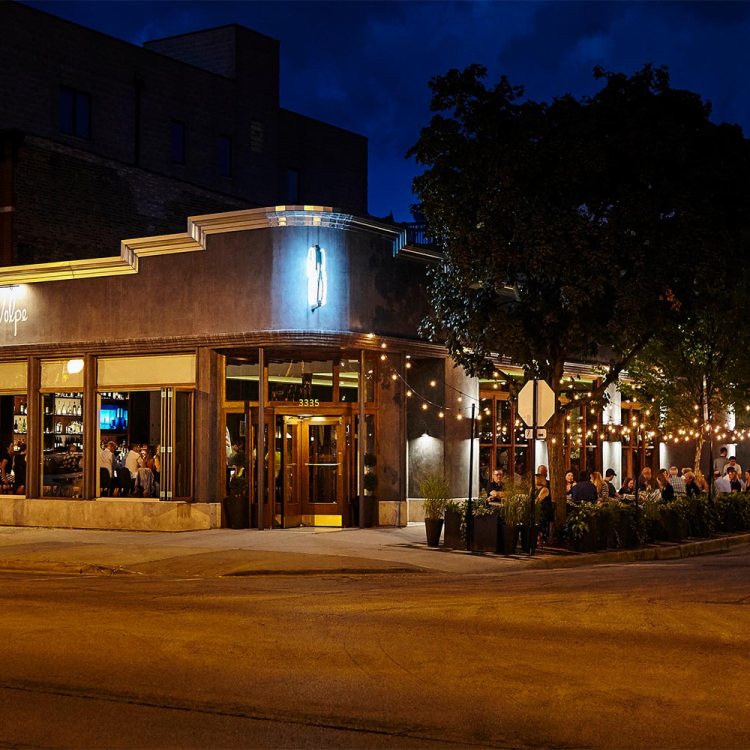Despite several recent missteps — pandemic deniers and people not understanding where babies come from, for example — capital-s Science is having a moment. This summer, NASA shared the first full-color images from the James Webb Space Telescope and Europe’s CERN successfully started their third run of the Large Hadron Collider (LHC). In other words, it’s a good time for geeks.
So if you’re buzzing with scientific excitement like us, we’ve got the perfect place for you to go: Batavia, Illinois
Not what you were expecting? Well, hidden in plain site about 35 miles west of Chicago is Fermilab, otherwise known as the Fermi National Accelerator Laboratory, a premier scientific research institution. At the 6,800-acre campus, Fermilab actively conducts studies on dark matter, quantum science, neutrinos and particle acceleration.
That’s right, before there was the LHC in Switzerland there was Fermilab’s Tevatron, a particle accelerator with a four-mile circumference. Until LHC was constructed in 2008, Tevatron (built in 1985) was the largest and highest-energy particle accelerator in the world. Today it’s the most powerful in the United States and second only to LHC globally.
In the aerial image of Fermilab below, the right circle is the Tevatron Collider. Dormant since 2011, this particle accelerator smashed subatomic particles into each other at a speed of 99.999954% the speed of light. The circle on the left circle is the Main Injector. Two miles in circumference, it produces the world’s most powerful high-energy neutrino beam. (Neutrinos are tiny particles sometimes referred to as “ghost particles.”)

While you can’t get into the underground tunnels of the accelerators, the Batavia site is open to the public, and although some programming has been affected by the pandemic, there’s lots to see and do.
So as the images of deep space keep rolling in and we all stare into the profound galactic grandeur to ponder our place in the great expanse, it’s an excellent time to treat your inner nerd to the field trip it deserves.
A Brief History of Fermilab
In operation since 1967, Fermilab is the flagship particle physics laboratory in the nation. Operated by the U.S. Department of Energy, the site employs 1,750 scientists and engineers from around the globe, and hosts thousands of visiting scientists annually.
Fermilab is responsible for the discovery of three fundamental particles, including the bottom quark in 1977 and the top quark in 1995 (in short, both were very big deals). To further drill the significance of this place home, the laboratory notes that two of their experiments — the CDF and DZero collider — are responsible for about 1,000 Ph.D. degrees. Flex.
Although he died before the lab was created, it’s named after Italian-American physicist Enrico Fermi because he is considered one of the greatest scientists of the 20th century; he is responsible for the first sustained nuclear chain reaction, which he created in Chicago as part of the Manhattan Project (to develop the atomic bomb) during WWII; and he named neutrinos, which are a huge part of Fermilab research today.
What to Know Before Visiting Fermilab
Since this is an operational government laboratory, there are some logistics to be aware of before you visit.
- All visitors must show a government-issued ID.
- Children under 18 must be accompanied by an adult.
- Enter the grounds at guarded entrances at either Pine Street in Batavia or Batavia Road in Warrenville.
- Certain areas of the site are only accessible with a Fermilab or DOE ID badge. If you’re in the wrong place, you’ll know it. I’ve been politely, albeit firmly, escorted off an unapproved bike path.
Upon presenting your ID at the gate, the security officer will ask for the purpose of your visit, so pick one of the adventures below and tell ‘em InsideHook sent you!

Go to Fermilab for the Science
First, the bad news: Public tours inside Wilson Hall remain on hold due to the COVID pandemic as well as increased security around Fermilab’s latest research. But there’s still plenty of cool science to interact with at the Lederman Science Center which is open and offers hands-on experiences. Complex topics are explained from a kid’s point of view so you don’t need to brush up on particle physics before you go — a mere appreciation for the science goes a long way here. The Center is open Monday through Friday 9:00 a.m. to 5:00 p.m. and Saturdays from 9:00 a.m. to 3:00 p.m.

Or Go for the Nature
True scientists that they are, Fermilab has been committed to nature conservancy since its inception. Around 1,000 acres are devoted to natural habitats, wildlife conservation and ecological science. This work earned Fermilab a National Environmental Research Park designation, joining a list of only seven “outdoor laboratories” in the U.S.
The outdoor grounds are open to the public every day from dawn to dusk and there are a number of public trails and roads for walkers, joggers, bikers and rollerbladers to explore. Enjoy one of Illinois’s oldest and largest reconstructed native tallgrass prairies as well as oak savannas, woodlands, lakes and wetlands. Local birdwatchers should be enticed by the avian diversity as nearly 300 species have been identified on the campus.

Or for the Bison
Fermilab’s first director, Robert Wilson, brought bison to the site in 1969 as a nod to the Midwestern prairie. Currently, the herd is 32 strong with new calves born every spring. These pure-bred bison (yes, obviously the Fermilab scientists do genetic testing on their mascot) graze in an open pasture that can be viewed by visitors. You can also try to spot them from home on the live bison cam.

Or the Architecture
Director Wilson had a strong vision that Fermilab would encompass all types of science and the beauty within. He requested a “cathedral of science” to act as a focal point of their studies and received the striking Atari logo-shaped 16-story Wilson Hall, complete with a double helix staircase inside. It’s definitely worth a drive by.
Architecture buffs and STEM fans alike will delight in sculptures throughout the grounds which include a stainless steel Möbius strip; the towering, twisting 36-foot Tractricious (seen above); a geodesic sphere made of 120,000 recycled pop cans; and a hyperbolic obelisk perched in a reflecting pool. Pick up a self-guided sculpture hunt map at Lederman.

Or Go to Fermilab for the Science Fiction Inspo
For those looking to fill the Stranger Things-sized hole in their heart, Fermilab serves major sci-fi vibes. They’ve got scientists in white lab coats, they’ve got underground tunnels, they’re operated by the government. Minus the unsettling experiments on psychic children and gate to hell, it’s our own little Hawkins Lab!
Visiting a place where they are actively building a proton accelerator to shoot particles from Batavia to South Dakota under the ground feels like stepping into a secret world. So turn on your Kate Bush and let your brain crack open to questions like, What are we made of? How did the universe begin? What secrets do the smallest, most elemental particles of matter hold, and how can they help us understand the intricacies of space and time? That’s verbatim from the About Us page on the Fermilab website, so they’re good for the answers.
This article was featured in the InsideHook Chicago newsletter. Sign up now for more from the Windy City.






















